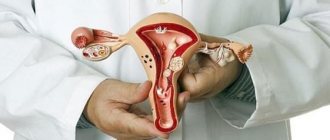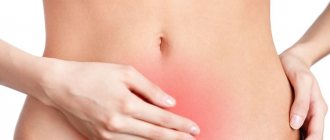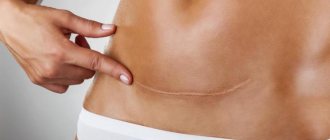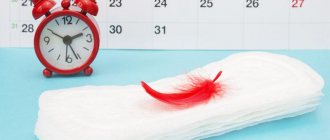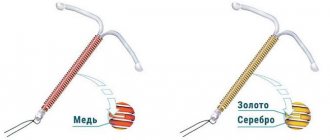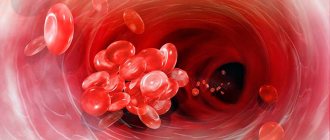After pregnancy, gestation and birth of a child, the mother’s body should return to normal. A certain period of time is needed for the reproductive organs to cleanse themselves, for the discharge to stop, for the blood clots and tissue remnants to come out. If this does not happen, rotting will begin in the uterine cavity, creating a favorable environment for the development of pathogenic flora.
Under certain conditions, there is a need for curettage. After childbirth, the uterus is cleaned if the following conditions exist: blood accumulates, particles of the baby’s place remain in the uterine cavity or on the walls of the organ, and blood clots do not come out. And after a cesarean section, this procedure is necessary, since the placenta has to be removed mechanically. Even microscopic lobes of the placenta are perceived by the reproductive organ as foreign, and the body is configured to remove them. Blockage of a vessel with a clot after some time can lead to severe bleeding.
Technique
Curettage after childbirth is performed using a vacuum or mechanical method. With a long enough labor, the mother's strength runs out, and the uterus does not contract intensely enough for the membranes of the placenta to be completely separated from it. Sometimes the fertilized egg is too tightly attached to the walls of the organ, and the placenta has to be separated manually.
After the baby is born, the woman remains in the delivery room for another two hours, where her condition, the presence or absence of blood loss, and the dynamics of uterine contractions are assessed. After examining in a chair using a gynecological speculum and ultrasound of the uterus, doctors, having discovered pathology, decide on cleaning.
Sometimes curettage is done on the same day, in other cases the condition of the young mother is monitored and an ultrasound is performed on the 5th day after birth. Based on its results, it is determined whether the process of reduction and purification is proceeding normally or whether cleaning is required.
The manipulation lasts about half an hour. The woman is given local or general anesthesia, the genitals are treated, the cervix is dilated, and the functional layer of the endometrium is scraped out with a curette. It is capable of regenerating: after a certain time, a new, intact mucous membrane is formed from its lower layers, and the uterus is again ready “for work.”
The technique for performing the procedure is the same as curettage for an unwanted pregnancy or curettage for diagnostic purposes.
During the operation, mechanical manual cleaning of the uterus from the functional layer of the endometrium, particles of membranes and blood clots is performed.
The cleansing of the woman in labor is supervised by doctors, and the postoperative period is under close supervision. They monitor the pulse, body temperature, discharge, and well-being, since curettage is a painful procedure, after which the uterus becomes an open wound. She needs antiseptic treatment and daily care. Medicines prescribed by a specialist will help to completely cleanse the birth canal.
Why do an enema?
It is worth noting that today a doctor does not have the right to force a future woman in labor to undergo bowel cleansing. The woman makes the decision to perform an enema herself. However, not all patients refuse it, and there is an explanation for this.
So, 5 arguments explaining why to do an enema:
- In the case of natural childbirth, when pushing occurs, the contents of the intestine are inevitably defecated, which is very unpleasant for both the woman in labor and the obstetrician. In addition, the expectant mother, fearing such incidents, cannot push at full strength, which only complicates delivery. An enema helps eliminate such situations.
- The rectum cleared of feces and the absence of obstructions in the form of seals facilitates the movement of the fetus through the pelvic area.
- With a full intestine, the likelihood of a newborn coming into contact with the feces of a woman in labor increases significantly. In this case, the risk of infection of the child is high; it can only be reduced by cleaning the intestines.
- During the enema, the uterus becomes toned, that is, contractions intensify, and the labor process intensifies.
- Constipation is very dangerous for a young mother, especially after a cesarean section, as it can cause the sutures to come apart. The advantage of cleansing is that the intestines remain empty in the first day after birth.
Important! If a woman in labor has significantly dilated her cervix or started having contractions, giving an enema is strictly prohibited!
Modern obstetricians and gynecologists also offer patients more gentle ways to empty the intestines, in particular microenemas. The procedure involves the introduction of a special medication into the intestines, which is sold in a pharmacy in tubes with tips. Convenient micro-enemas in a small volume and speed of action.
An even milder alternative to an enema is glycerin suppositories, which need to be inserted into the anus and held for 10 minutes, then go to the toilet.
Vacuum cleaning of the uterus
For vacuum cleaning of the uterus after childbirth, a special device is used - a vacuum pump equipped with aspiration tips. Negative pressure is created in the organ cavity and the contents are expelled.
The vacuum method involves manual and machine scraping. The first is the most common and includes:
- Treatment of the external genitalia.
- Inserting a speculum into the vagina.
- Preparation of the cervix.
- Insertion of aspiration tube.
- Removal of tissue by rotating the tube or diagnostic sampling of material for research.
Vacuum cleaning is indicated:
- if after childbirth or caesarean section the placenta or part of it remains in the reproductive organ;
- as a result of spontaneous miscarriage with incomplete release of embryonic remains;
- after an abortion;
- for the study of biocenosis;
- with hydatidiform mole;
- severe uterine bleeding.
This method of curettage is more gentle than mechanical, since trauma to the uterus, cervical canal and endometrium can be minimized.
When should you seek help from a doctor?
If blood clots come out, your doctor will be able to tell you exactly what they are. Even after the doctor confirms that everything is fine and goes home, the woman should pay special attention to her discharge. As soon as any strange symptoms appear, you should not delay your visit to the doctor.
The reasons to contact a gynecologist should be:
- If blood clots in the uterus after childbirth are bright scarlet in color and are accompanied by painful sensations.
- Very heavy bleeding.
- If the discharge continues after two months.
- If lochia has an odor and is accompanied by itching.
- Increase in body temperature and cessation of lochia secretion.
- If there are pauses in the discharge for several days.
Cleaning after a caesarean section
If cleaning the uterus after childbirth is a common occurrence, then the doctor should prescribe curettage after a cesarean section with caution and taking into account the health status of the mother in labor. The body takes longer to recover after surgery, the incision made breaks the integrity of the muscle tissue, and the reproductive organ contracts worse. Only by the end of the second week after the baby is born, its size and shape are restored, and the stitches take even longer to heal.
Women who had to undergo a cesarean section have more postpartum complications in the uterine cavity.
On the 3rd day after the procedure, an ultrasound is performed to examine the integrity of the suture. If there is intense pain, an unscheduled ultrasound examination is performed to assess the condition of the postoperative scar. Its swelling may indicate postpartum endometritis - inflammation in the mucous layer of the uterus.
According to the doctor's indications, curettage is performed during the cesarean section itself, this helps to avoid complications. But sometimes parts of the placenta remain inside, which is a direct reason for cleaning.
To ensure that the next pregnancy after a cesarean section goes well, experts recommend abstaining from conception for 3 years. During this time, the postoperative scar heals, and the uterus is again ready to bear a baby.
However, sometimes pregnancy occurs earlier, and you have to make a choice: keep the baby or decide to terminate the pregnancy. Women who have had an abortion after a cesarean section note that this is a big health risk, since the unformed scar can be damaged.
Discharging from maternity hospital
Before sending the woman in labor home, an ultrasound examination is performed. It examines the uterine cavity for the presence of large lochia. If you have not had an ultrasound examination, please contact the clinic at your place of registration or residence. The procedure can protect you from complications.
If any deviations are detected, the discharge will be postponed to a later date. There should be no clots left in the uterus at all. Otherwise, the woman may be prescribed a procedure such as cleaning after childbirth. If clots are detected in the first two or three days after the long-awaited moment, when the walls of the uterus have not yet contracted, then the procedure for cleansing the reproductive organ will be less unpleasant, because there will be no need to expand the walls.
Complications after cleaning
After every surgical intervention, possible complications occur. Curettage of the uterus after childbirth is no exception. One of the side effects is hematometra, when blood clots accumulate in the reproductive organ. During a muscle spasm, the pharynx closes and they remain inside. To prevent blood from accumulating in the uterine cavity, doctors prescribe No-shpa to relax the muscles.
During the cleaning process, the surgeon may puncture the wall of the uterus with a sharp instrument, causing it to perforate. As a rule, the problem is fixed on the same day.
Late complications that develop a few days after curettage can lead to infection and further unpleasant consequences. Poor disposal of placental remains can provoke symptoms of acute endometritis, which is characterized by high fever, pain in the lower part of the body, and discharge with an unpleasant odor.
The condition of the uterus after curettage is no different from menstruation: normal discharge should be moderate, without an unpleasant odor, and last about a week. Then their intensity decreases and the bleeding stops.
Causes of placenta remnant
If clots remain in the uterus after childbirth, then possible reasons for this may be:
- Low activity of the uterine walls, which leads to ineffective contractions. The cause of the problem, as a rule, is a decrease in the level of a female hormone such as prolactin. It is he who promotes uterine contractions and removal of amniotic membranes.
- The presence of a bend in the isthmus of the uterus. This may be a congenital feature of the body. During the period of active discharge, blockage of the passage may occur, which will lead to an inflammatory reaction. The presence of such a feature is determined by conducting an ultrasound examination. In its absence, the woman herself will be able to recognize the danger by the main symptom of the bend - a sudden stop of discharge.
Recovery
Rehabilitation after curettage should be aimed at restoring the function of childbearing; uterine bleeding still occurs, but this is a common occurrence. Slight pain radiating to the lower back indicates that the organ has begun to contract. The discharge becomes brown, and after a while - white, mucous, that is, it returns to normal.
It is necessary to abstain from sexual activity until the surface injured by curettage is completely healed. Both partners risk getting an infection, and the woman will experience pain during sex. There may be heavy bleeding due to vaginal irritation.
You should adhere to a healthy lifestyle and follow medical instructions. You cannot take baths, douche, go to the bathhouse or sauna, use tampons, or lift weights.
If you follow the recommendations, the menstrual cycle resumes within a month and reproductive health is restored.
Treatment
Therapy after curettage of the uterine cavity involves taking medications. They do not build up the endometrium, but prevent infection and improve a woman’s well-being. Antispasmodics are prescribed with caution because they promote contraction of the uterus, which is accompanied by severe pain, especially immediately after cleansing. In severe cases, No-shpa is indicated.
Antibiotics are required to be prescribed: they help avoid infection. The vaginal microflora is restored with the help of antifungal agents in the form of tablets and suppositories. You can use herbal decoctions and infusions: shepherd's purse, nettle, boron uterus, viburnum, lemon balm.
Hormonal medications help restore balance in the body and prevent recurrence of the disease.
In addition to the medications listed, they take enzymes that prevent the formation of adhesions.
A prerequisite is an examination by a gynecologist and repeated tests to avoid relapse. There is no point in planning pregnancy within the next six months of treatment. You should have sex after curettage with a condom and only after a follow-up examination by a female doctor.
Childbirth is a complex and step-by-step process. Sometimes it happens that the birth of a child is only a small part of what the expectant mother has to endure.
Quite often, a gynecologist prescribes cleaning the uterus after childbirth. Patients get scared and wonder why this is necessary. However, everything is not so simple here. This procedure is carried out if the placenta has separated in pieces or has not come out of the uterine cavity at all.
For some women, it is enough to stimulate muscle contractions with oxytocin or other hormones to release the afterbirth. For the rest, there is nothing more reasonable than to carry out vacuum or manual scraping .
Scraping is a cleaning aid for the body
It must be said that the well-known expression: “Man is a social animal” is confirmed in all manifestations of human life, starting from the moment of conception and ending with death. The process of childbirth is no exception: in the wild, the birth of any animal is regulated by the principles of natural selection, and only human children are born under the supervision of medical specialists. It is thanks to the institution of obstetric care that many women maintain their health, the possibility of re-conception, and sometimes even life (not to mention the health and life of their child) - and therefore one should trust the professionalism of people called upon to protect the life and health of their patients. Believe me: without proper reasons, cleaning the uterus after childbirth is not carried out - especially with such a level of medical diagnostics as it is today.
The fact is that the integrity of the placenta may be compromised for several reasons: the detachment of the amniotic membranes and placenta from the uterine tissue may be incomplete - particles of the child’s placenta may remain on the walls of the uterus or in its cavity, becoming the cause of many diseases.
Why iron deficiency anemia may appear in a woman after childbirth
First of all, pieces of tissue (or blood clots) lingering in the uterus undergo rotting, becoming an ideal environment for the proliferation of bacteria and viruses - and this can lead to necrosis of surrounding tissues and blood poisoning, not to mention inflammatory processes of varying severity.
In addition, even microscopic particles of the placenta, being in the uterine cavity, are perceived by the body as foreign - and therefore the body strives to get rid of them, expending its (already depleted) protective resources. As a result, the postpartum recovery period is prolonged, which increases the possibility of infection of the reproductive organs, and the woman’s return to the normal rhythm of life is postponed indefinitely.
To avoid such postpartum complications, vacuum or manual (scraping) cleaning is carried out after childbirth.
If we allow ourselves a figurative comparison, then the work of a gynecologist, in this case, can be compared with the services of a cleaning company. Any housewife can maintain order in the house, but sometimes it is difficult to cope alone with eliminating the consequences of particularly stormy parties or visiting too “liberated” guests. Then professionals come to help with cleaning, who will quickly and efficiently restore perfect order and sterile cleanliness: there will be no trace left of food debris, crumbs stuck in the cracks, or dirty shoe prints, which means that the threat of an “invasion” of cockroaches and microorganisms harmful to health will disappear. .
What could be the consequences after cleaning the uterus?
The process of scraping a woman’s muscular organ is quite complex. The doctor performs it almost blindly . At the same time, it is not possible to use cameras that would display images of internal organs on the monitor.
That is why sometimes adverse consequences occur , namely:
- introduction of infection;
- development of the inflammatory process;
- endometritis;
- hematometer;
- exacerbation of chronic sexual diseases;
- heavy bleeding.
Normally, after such an operation, bleeding for 5-7 days. However, if they continue longer than the designated period and at the same time become more and more abundant, then this is a cause for alarm.
If you ignore these signs and do not contact a gynecologist, you may subsequently lose the opportunity to have children. Untreated endometritis or hematometra often become a reason for complete surgical removal of the uterus. You can avoid negative consequences. To do this, it is necessary to contact your doctor when the first symptoms indicating the presence of a problem occur.
ICD-10 code
If you think carefully, nothing in our boundless world appears just like that. There is a reason for everything. So is the case with the formation of adhesions after a cesarean section. Their appearance was facilitated by several reasons, which can be eliminated in time to avoid unpleasant consequences.
Doctors are inclined to believe that the main and most common cause of the formation of adhesions after a cesarean section is still the lack of physical activity of women after the operation. The sedentary lifestyle of young mothers may be due to the fact that the body often recovers quite slowly after a difficult birth. Limitation of activity is also facilitated by the fear of postoperative sutures coming apart, pain in the lower abdomen during active movements, and autonomic disorders due to hormonal imbalance that arose during pregnancy.
The formation of adhesions and gluing of abdominal organs can provoke inflammatory processes in the peritoneum. During a caesarean section, the formation of adhesions is noted precisely in the pelvic area, where foci of inflammation often “nest”.
The appearance of adhesions is sometimes a consequence of improper execution of the cesarean section operation itself. Then the fault lies in the lack of professionalism of the surgeon or negligent actions on the part of assistants and medical staff. A sloppy suture or equipment “accidentally” forgotten in the abdominal cavity also becomes a fairly common and serious cause of the development of adhesions.
In principle, a sedentary lifestyle, the development of inflammatory processes in the pelvic organs, and the incompetence of the personnel performing surgical intervention are just risk factors for the appearance of adhesions in the postoperative period, which can be avoided if you take care of your health (and the health of other people). ) more attentively.
Does cleaning hurt?
There are no completely painless procedures in medicine. This is an indisputable fact. However, it was not for nothing that anesthesia was invented. The curettage process takes place under local or general anesthesia . Without this, a woman is not able to tolerate such manipulation of her internal organs.
If the doctor sees from the ultrasound results that curettage can be performed under local anesthesia, then he does so. However, the woman still feels some discomfort . As a rule, it all depends on the sensitivity threshold. If it is high, then the patient will feel a little pain. When the pain threshold is low, the discomfort is practically not felt.
When is the procedure performed without anesthesia?
Many women think with horror about the upcoming cleansing . They vividly and in detail imagine how doctors will mock them. However, it is worth remembering that this is the 21st century. No one will bully people. It is extremely difficult mentally and physically to endure uterine curettage without anesthesia.
If for some reason general anesthesia cannot be performed , then local anesthetics are used. It can be:
In no case can this operation be performed without anesthesia. Doctors simply do not have the right to do this. Do not be afraid if the doctor has not prescribed general anesthesia. Before cleaning, the uterus must be numbed with other local medications . At the same time, pain is felt, however, it is not so strong that you tremble and twitch.
With the right psychological attitude, such an intervention can be tolerated. This is not an abdominal operation without anesthesia, but a simple curettage. So there is no need to worry unnecessarily. The gynecologist knows what and how to do.
Is an enema done before a caesarean section?
Before any planned abdominal surgery, artificial bowel cleansing is mandatory. Therefore, the answer to the question of whether women get an enema before a cesarean section is obvious. The procedure is usually done a few hours before birth.
The obligatory nature of an enema before a CS is explained by the following facts:
- Anesthesia relaxes all muscle groups, including the sphincters. Due to anesthesia, involuntary bowel movements may occur. To avoid this phenomenon, the intestines are cleansed before surgery.
- During surgery, there is a risk of opening the intestinal walls if the intestines are full. Accordingly, fecal matter can get into the wound. An enema allows you to avoid this.
- After a caesarean section, women in labor often experience constipation, due to the fact that they cannot move for the first days after the operation. In this case, intestinal activity is also disrupted, which can cause fecal stagnation and intoxication of the body. Artificial bowel cleansing can prevent such complications.
Some women, preparing for childbirth, begin to take laxatives to avoid enemas. This is strictly not recommended, as the risk of complications during delivery increases.
You may be interested in: Indications for caesarean section: pros and cons for the child
How is curettage done?
Scraping is done using special tools : manual or vacuum.
In both cases, the upper inner layer of the uterus is removed along with pieces of the placenta or the entire placenta. This is done in order to prevent the development of the inflammatory process in the birth canal.
There is no need to worry about the endometrium recovering more. Within a month after curettage, a new protective layer grows .
Cleaning the uterus is performed under general or local anesthesia. A woman sits in a gynecological chair, she is given anesthesia, and her genitals are treated with iodine and a 50% alcohol solution to disinfect. When the anesthesia has taken effect, the doctor begins cleaning. Using special instruments, he scrapes out everything unnecessary from the uterus . At the end of the procedure, the woman is transferred to a hospital, where she undergoes rehabilitation over the next few days.
Vacuum cleaning: distinctive features
This type of curettage is safer , according to some doctors. However, it also causes more pain for the patient. This is why vacuum cleaning is done under general anesthesia and nothing else.
The placenta is sucked out from the uterine cavity using a special device, which in its mechanism of action resembles a vacuum cleaner. Of course, this comparison is a little exaggerated, however, the vacuum cleaning device sucks in the contents of the uterus along with the upper layer of the endometrium.
After such curettage, the doctor must treat the inside of the uterus with an antibacterial solution to avoid contamination and infection . In addition, the woman is prescribed a course of antibiotics that will prevent the development of extensive inflammation of the uterus and appendages.
Manual cleaning after childbirth
Such scraping differs from the version with a vacuum instrument only in the shape and mechanism of action of the device for the operation. As a rule, this kind of intervention is performed using an instrument that has a round loop at the end .
Thus, all foreign bodies that are in the uterus are captured and brought out. After manual cleaning, the doctor always prescribes antibiotics, and for some time the woman should regularly visit the gynecologist. This will protect the patient from negative consequences and complications.
Precautionary measures
Following simple rules will help avoid complications and pathologies.
- Maintain personal hygiene. Wash your genitals several times a day. This helps reduce the risk of an inflammatory reaction.
- Refrain from active loads and lifting heavy weights.
- Pay close attention to your stool. There should be no delays or constipation.
- Lie on your back once or twice a day. This position stimulates the release of lochia.
- After childbirth, it is recommended to apply ice to the abdomen. This helps reduce blood loss.
Curettage after caesarean section
If the birth was not natural, then the placenta is removed during cesarean section . After this, in most cases, no complications arise.
However, situations occasionally occur when the doctor missed several pieces of the placenta. This is a direct reason for prescribing curettage. Only the doctor can decide which form of procedure is best.
However, according to modern statistics, preference is given to the vacuum method. The patient is put under short-term general anesthesia and curettage is performed, which lasts no more than 20 minutes .
Reviews from women in labor
Statistics show that it is extremely rare for patients to experience complications or negative consequences of cleaning. However, all women are individual . For each woman in labor who needs this procedure, the process proceeds completely differently. Some complain that the surgery was extremely painful. In some cases, women say that cleaning is more painful than childbirth.
There are also those patients for whom cleaning did not bring much discomfort . They argue that the careful actions of the gynecologist and his experience in this matter are the key to comfort and painlessness for the woman in labor. In addition, according to reviews, we can conclude that curettage does not last long (about 20 minutes), so the pain goes away quickly.
When does it become necessary to cleanse after childbirth?
Each woman gives birth twice (in one visit to the maternity hospital): a baby and the placenta (afterbirth), with which he was kept for all 9 months. Many women do not even notice the birth of the placenta, since at this time they are already busy looking at the baby, who has buried his small nose in the mother’s chest. But this does not always happen, unfortunately. Sometimes the placenta is too tightly “fused” with the uterus and is born “partially” or does not come out at all, then manual separation of the placenta should be performed, which is always carried out after a cesarean section.
Before discharge from the maternity hospital (on days 2-3), the woman undergoes a diagnostic ultrasound to assess the condition of the internal cavity of the uterus. If the doctor finds traces of placenta or blood clots in the uterus, then the woman in labor is prescribed a cleaning.
Forms
There are also 3 types of development of adhesions after surgery. More precisely, we are talking about the forms in which the disease, characterized by the formation of adhesions after cesarean section, can occur.
The acute form of the adhesive process is characterized by the severity of symptoms of intestinal obstruction (acute and cramping abdominal pain, nausea and vomiting, stool disturbances), accompanied by an increase in temperature to 38-39 degrees and heart rate (pulse), weakness, a drop in blood pressure, and symptoms of intoxication .
The intermittent form of adhesive disease is more common than the acute form. She has almost the same symptoms, but their intensity is much weaker. To a large extent, for this reason, the pathology remains unnoticed, and the malaise is attributed to problems with the intestines (the symptoms of intestinal obstruction are more pronounced than others).
For the chronic form of adhesions, the “norm” is the absence of any unpleasant symptoms. Occasionally, adhesive disease can remind itself of weak nagging pain in the lower abdomen, digestive disorders in the form of periodic constipation or diarrhea, weight loss without any prerequisites for this.
- introduction of barrier fluids into the abdominal cavity that prevent the appearance of exudate and the formation of fibrinous tissue,
- the use of self-absorbable films to wrap them around the internal organs of the small pelvis, near postoperative scars.
Natural childbirth is a rather difficult and long physiological process that requires a lot of strength and patience from a woman. It can be divided into several stages: the onset of contractions, the birth of a child and the birth of the placenta. The appearance of the membrane in which the fetus developed is the completion of the birth processes: its integrity determines whether cleaning will be carried out after childbirth, or, in medical terms, postpartum curettage.
How to cleanse after childbirth?
“Cleaning” in “medical language” means scraping. This procedure may be familiar to women who have had an abortion. Curettage of the uterine mucosa is an operation in which mechanical removal of the functional layer of the endometrium is performed. A new mucous membrane grows from the germinal layers of the endometrium soon after curettage.
Typically, cleaning is carried out under general anesthesia in a gynecological chair. Before the operation, the external genitalia are treated with a 5% alcohol solution of iodine, and the vagina and cervix with 50% ethyl alcohol. Using inserted dilators of various diameters, the cervical canal is expanded and the remaining placental tissue is removed using a special blunt curette or an obstetric curette with teeth. The operation lasts no more than 20 minutes.
How to behave after cleaning?
After cleaning, a woman should be under the supervision of doctors who monitor body temperature, pulse rate, and discharge from the genitals. The external genitalia should be treated with antiseptic solutions 2 times a day.
After the operation, you cannot use vaginal tampons, douche, take a bath, go to the sauna, lift weights, or play sports for 2 weeks. Vaginal sex is also contraindicated due to the fact that the cervix remains open and there is large erosion on the uterine mucosa, which can become favorable conditions for the development of an infection that can be “introduced” by a sexual partner.
To prevent inflammation and other complications after cleaning, antibiotics are prescribed. The curettage procedure is painful, and therefore pain may be observed in the postoperative period. During this period, you may be prescribed no-spa to prevent the development of hematotra (blood clots in the uterine cavity).
Guarantee of fast rehabilitation
As a rule, cleaning after a CS and normal childbirth is practically no different in the method of implementation. The rehabilitation period in both cases is also almost the same - it lasts about 2 weeks (unless, of course, the birth canal is damaged in the case of orthodox childbirth). The first days after the cleansing, the woman should be under strict medical supervision - the doctor monitors the symptoms of the recovery process: body temperature, pulse rate, abdominal pain on palpation - based on these parameters, the specialist can draw the correct conclusion about the patient’s condition and her readiness for discharge.
Solving the problem of how to go to the toilet for a woman after childbirth
Medicines prescribed during this period promote speedy recovery and stop the development of inflammatory processes: as a rule, these are no-spa and antibiotics. Naturally, during this time you should refrain from breastfeeding - and this will require expressing milk.
An important role during the rehabilitation period after cleansing is played by compliance with certain restrictions: at this time it is recommended to refrain from vaginal sex, swimming in any body of water (including taking baths), visiting baths and saunas - the risk of penetration of pathogenic microorganisms into the uterus is too high. In addition, during this time you should avoid lifting weights over 3 kg and limit the intensity of sports, as such actions can provoke bleeding.
So, childbirth is already over, and you are ready to experience all the joy of motherhood. But it was not there. When you are discharged from the maternity hospital, you undergo a control ultrasound and are prescribed curettage. Cleaning after childbirth probably raises a lot of questions in you, since this procedure is most often associated with an abortion or an unwanted pregnancy, but not with the birth of a long-awaited baby.
Reasons for cleaning the uterus after childbirth
Vacuum or manual cleaning after childbirth is prescribed when, during a follow-up examination, the doctor notices remnants of the placenta or blood clots in the uterus. An unpleasant and even painful procedure is mandatory, because otherwise you will feel constant severe pain in the lower abdomen, and serious inflammation will begin in the uterus itself.
According to experts, cleaning after childbirth can be avoided. Sometimes the doctor prescribes a drip or injection with a substance that stimulates the activity of the uterus, during which all the “excess” will come out. But if this method turns out to be ineffective, then more drastic measures will be required - curettage.
Recommendations after cleaning
The cleaning itself is carried out under local anesthesia or general anesthesia and takes about 20 minutes. After the procedure, the woman should remain under the supervision of doctors, since there is a risk of bleeding, which will require surgical intervention by specialists.
Next, throughout the week, it is necessary to treat the outer surface of the perineum with antiseptics. For 2 weeks, the use of tampons, visiting the sauna, taking a bath and any physical activity is prohibited. As for this period, in the first few hours they will be especially intense, in addition, you will notice blood clots. Further, the discharge will become smaller, acquire a brown or yellowish tint, and after 10 days it will completely stop.
Despite the fact that cleaning is a rather unpleasant procedure, it is better to do it on time. Therefore, if you were not examined by a doctor upon discharge from the maternity hospital, try to visit a gynecologist yourself as quickly as possible.
After all the horrors that a woman in labor has to go through during the birth of her baby, I really don’t want to think that in the near future a uterine cleaning
.
Unfortunately, the opinion that cleaning the uterus after childbirth
is done to almost all women who have recently given birth is very popular.
Such information is unreliable and unsubstantiated. Doctors make a decision on the need for additional cleansing of the uterus in accordance with the condition of each individual woman, only after a thorough examination in the chair and an ultrasound examination. There is an opinion that in some maternity hospitals cleaning after childbirth
is a preventive procedure - since doctors are responsible for the health of the mother in labor until discharge, they prefer not to risk the condition of their patients, and prescribe cleaning for absolutely everyone.
It is quite difficult to confirm or refute this statement. If you hear stories like this about one of these, do everything possible so that you don't have to give birth there. Since modern medicine allows you to choose the place where your child will be born based on your preferences, and not on your place of residence, it is more than possible to do this in our time.
So, what is cleaning the uterus after childbirth
and when is it done? What is the real reason for performing it and how to prevent repeated surgery? This is exactly what our article will discuss.
